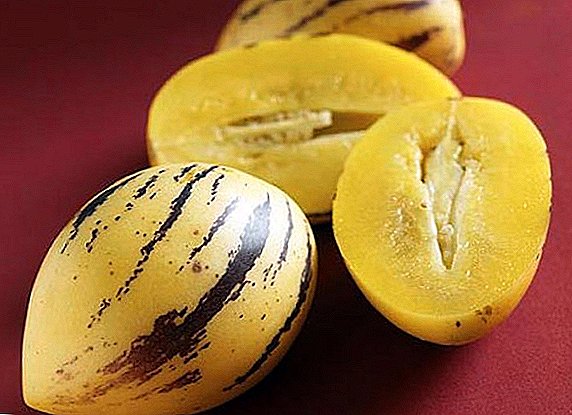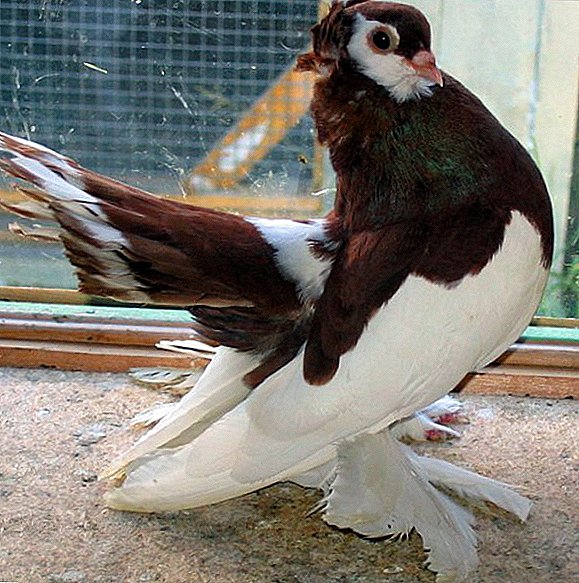 The ancient sources of Mesopotamia, which are more than 5 thousand years old, contain the first stories about pigeons. And Egyptian burial store the remains of these birds, like sacred birds. For millennia, pigeons live next to man and change with him.
The ancient sources of Mesopotamia, which are more than 5 thousand years old, contain the first stories about pigeons. And Egyptian burial store the remains of these birds, like sacred birds. For millennia, pigeons live next to man and change with him.
Breed history
A relatively young breed of the Volga ribbon bred by Russian breeders (pigeon breeders) at the beginning of the 20th century by crossing the Volga red-breasted, Syzran vislokryly and Rzhevsky pigeons.
We advise you to read about what diseases you can get from pigeons, how to find out the sex of a pigeon, what life expectancy of pigeons in the wild and at home, how to properly and reliably discourage pigeons from the balcony, where you can see pigeons nestlings, and how pigeon mail previously worked .
These birds are considered one of the most recognizable and beautiful among other breeds. Their appearance is remembered for a long time and neither the urban nor the rural inhabitants are accustomed to the eye. Pigeons are endowed with a peculiar structure of the body and an unusually bright plumage.  Having dismissed tail feathers, showing a proud, confident posture and sedate behavior, they further emphasize their attitude to the stately appearance. Experts from international exhibitions show special interest in them.
Having dismissed tail feathers, showing a proud, confident posture and sedate behavior, they further emphasize their attitude to the stately appearance. Experts from international exhibitions show special interest in them.
It is worth saying that these birds are unpretentious to the conditions of housing and food, show good flying qualities, become excellent parents for their chicks.
Important! Females of all kinds of pigeons do not lay eggs all alone. For this they need at least a visible presence of a male. In captivity they are deceived with the help of a mirror.
External features
Volga tape have an average size, a stately physique and beautiful in color gamut plumage.  The characteristic features of the breed are the following signs:
The characteristic features of the breed are the following signs:
- nut-shaped head, crown flat;
- the forehead is relatively wide, rounded, steeply descending to the base of the beak;
It will be useful for you to learn about the features of breeding and feeding pigeons, as well as learn how to equip the dovecote.
- the eyes are dark, medium size;
- eyelids narrow, smooth, pale flesh;
- beak short, pointed, densely closed, light pink shade (sometimes there is a gap);
- ceramum soft, underdeveloped, flesh-colored;
- the neck is of medium length, full, beautifully arched;

- chest convex and wide;
- the back is wide, but short, sloping towards the tail;
- wings hanging, i.e., lower than tail, composed of wing feathers;
- the tail is wide, flat, raised and consists of steering feathers (12-16 pieces);
- legs short, covered with plumage;
- flesh claws;
- shields have the color of the main plumage;
- feathers cherry white, occasionally yellow-white;
- belts are missing.
Important! Tape pigeons around the age of 1 choose a mate for life. Male and female often show each other devotional feelings: they clean feathers, deliver food, sit for long periods next to each other. Do not separate the created pair intentionally or without intent!
Flight performance
The full picture of the flight characteristics of pigeons manifests itself with constant and proper training and good conditions. Volga belt show high flight characteristics of a circular slow flight lasting 2-3 hours (sometimes longer), able to climb to a greater altitude. 
Color spectrum
The color range of this breed has clear boundaries, rich, smooth and brilliant texture. Cherry (rarely yellow) will be the head, neck, chest, back, nadhvoste and tail of pigeons. White plumage endowed mandible, throat, cheeks, eyebrows, wings, abdomen and legs of feathered individuals.
Did you know? From the general list of species of pigeons stand out Birmingham rollers. Amazing birds perform flips (sometimes a whole series) during flight. Breeders claim that the rollers just love these tricks.
The feathers of the neck and chest gleam with ebb. An obligatory element of the tail is the presence of a white band 1-2 cm wide, passing across the tail at a distance of 0.5-1 cm from its end.  Do not deny yourself the pleasure of communicating with an amazingly beautiful and unpretentious breeding Volga band pigeons.
Do not deny yourself the pleasure of communicating with an amazingly beautiful and unpretentious breeding Volga band pigeons.
Did you know? Pigeons possess atnikalny vision. The sun's rays, a flash of lightning, a stream of sparks from electric welding machines and even flashes of lasers do not damage the bird's eye retina. The connective tissue, which has the ability to change its density, helps protect the retina from harmful stimuli.













